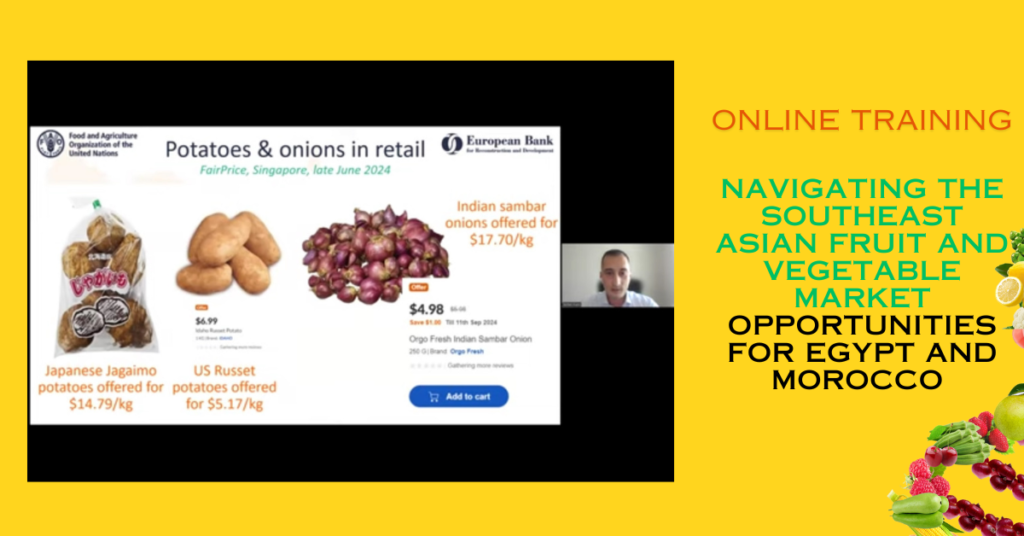“Egypt and Morocco, two of the global leaders in frozen berry exports, are still largely absent in Southeast Asia, which is currently experiencing a significant boom in frozen produce”, said Yevhen Kuzin, an International Consultant at FAO and Horticulture Market Analyst, during the online training titled ‘Navigating the Southeast Asian fruit & vegetable market. Opportunities for Egypt and Morocco’.
The training was organized for companies from Egypt and Morocco involved in exports of fruits and vegetables and interested in opportunities in Southeast Asia (Hong Kong, Singapore, Malaysia, Indonesia, Thailand, Taiwan, the Philippines, Vietnam) by FAO/EBRD Project: Food Security Package SEMED – Diversifying and adding value to export markets.

In the past five years, frozen berry imports in key Southeast Asian countries (excluding Vietnam) have increased by almost a third, while total frozen fruit import volumes have nearly tripled. “However, both Egypt and Morocco, as well as other key global exporters, have a very limited presence in the region despite their dominance in adjacent countries such as Japan, South Korea, and even China,” Kuzin added.

In the frozen berries category, strawberries are the most important import in Southeast Asia, with key buyers including Thailand, Taiwan, the Philippines, Malaysia, and Indonesia. Considering the regional climate specifics, booming domestic consumer market, and recovering tourism sector in Southeast Asia, imports of frozen berries are expected to continue growing. Nevertheless, Egyptian annual frozen strawberry exports to Southeast Asia have varied between 300-900 tonnes, while Moroccan exports have not exceeded 30 tonnes per annum.
“Meanwhile, countries such as Japan and South Korea have already shifted their focus to imports from both Egypt and Morocco. In the frozen strawberry segment, the share of both North African countries exceeds 36% of Japan’s total imports, and Egypt alone accounts for 20% of South Korea’s frozen strawberry imports. Moreover, both Egypt and Morocco are key exporters of this product to China,” emphasized Kuzin.
A video recording of the training on Southeast Asian market opportunities for fruit and vegetable exporters from Egypt, Morocco, and beyond is available on EastFruit’s YouTube channel. Don’t forget to like and subscribe to stay updated with our latest videos, and feel free to leave a comment if you have any questions or suggestions.
The use of the site materials is free if there is a direct and open for search engines hyperlink to a specific publication of the East-Fruit.com website.




